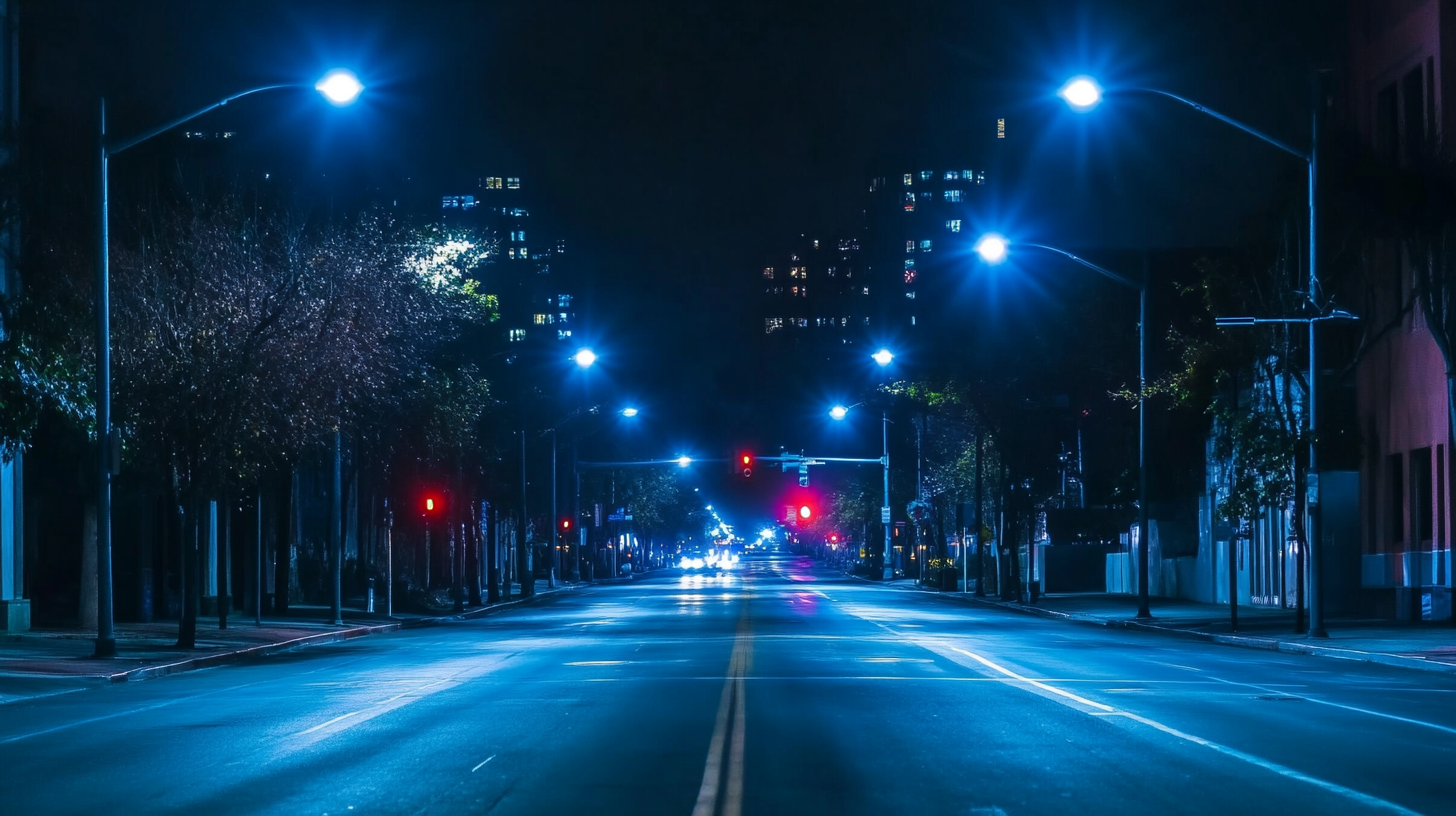Exploring the Future: Top 2025 Technology Trends in the Best LED Street Lights Industry
 As we look toward 2025, the LED street lights industry stands at the forefront of the technological evolution in urban infrastructure. Recent market research indicates that the global smart street lighting market is projected to reach USD 22.3 billion by 2025, reflecting a compound annual growth rate (CAGR) of 19.0% from 2020 to 2025. This growth is driven by the increasing need for energy-efficient and sustainable urban lighting solutions, along with advancements in smart city technologies. LED street lights, renowned for their durability and energy savings of up to 50% compared to traditional lighting, are set to integrate with smart sensors and IoT applications, enhancing city management and public safety. This blog will delve into the key technology trends shaping the future of LED street lights, exploring innovative solutions that promise to redefine urban environments in the years to come.
As we look toward 2025, the LED street lights industry stands at the forefront of the technological evolution in urban infrastructure. Recent market research indicates that the global smart street lighting market is projected to reach USD 22.3 billion by 2025, reflecting a compound annual growth rate (CAGR) of 19.0% from 2020 to 2025. This growth is driven by the increasing need for energy-efficient and sustainable urban lighting solutions, along with advancements in smart city technologies. LED street lights, renowned for their durability and energy savings of up to 50% compared to traditional lighting, are set to integrate with smart sensors and IoT applications, enhancing city management and public safety. This blog will delve into the key technology trends shaping the future of LED street lights, exploring innovative solutions that promise to redefine urban environments in the years to come.
Emerging Innovations in LED Technology: Shaping the Future of Street Lighting
The emergence of cutting-edge innovations in LED technology is revolutionizing the street lighting landscape. According to a recent report by MarketsandMarkets, the global LED street lighting market is projected to reach $30.4 billion by 2025, reflecting a compound annual growth rate (CAGR) of 11.2% from 2020 to 2025. This surge is driven by the increasing focus on energy efficiency, sustainable urban development, and smart city initiatives. LED street lights not only consume up to 50% less energy than traditional lighting but also have a significantly longer lifespan, reducing maintenance costs and environmental impact.
Furthermore, advancements in smart lighting systems are setting new benchmarks in urban illumination. Modern LED street lights are now equipped with IoT (Internet of Things) capabilities that allow for real-time monitoring and adaptive lighting based on pedestrian and vehicle traffic. A study by ResearchAndMarkets indicates that the integration of smart technology can result in energy savings of up to 70%, substantially enhancing the operational efficiency of city lights. These innovations not only promise brighter and safer streets but also align with cities' goals for sustainability and improved public services, ultimately reshaping the future of urban environments.
Future Technology Trends in LED Street Lighting (2025)
This chart illustrates projected trends in LED street light innovations, highlighting performance improvements, energy efficiency, and smart integration capabilities expected by 2025.
Sustainability Goals: The Role of Energy Efficiency in LED Street Light Adoption
 The increasing emphasis on sustainability has propelled energy efficiency to the forefront of the LED street light adoption discourse. According to a report by the International Energy Agency (IEA), street lighting accounts for about 19% of global electricity consumption for public lighting. Transitioning to energy-efficient LED street lights can lead to a significant reduction in energy usage, with studies indicating potential energy savings of up to 50% compared to conventional street lighting technologies. This shift not only supports urban sustainability goals but also resonates with the growing global commitment to reduce carbon emissions.
The increasing emphasis on sustainability has propelled energy efficiency to the forefront of the LED street light adoption discourse. According to a report by the International Energy Agency (IEA), street lighting accounts for about 19% of global electricity consumption for public lighting. Transitioning to energy-efficient LED street lights can lead to a significant reduction in energy usage, with studies indicating potential energy savings of up to 50% compared to conventional street lighting technologies. This shift not only supports urban sustainability goals but also resonates with the growing global commitment to reduce carbon emissions.
As municipalities adopt LEDs, the tangible benefits extend beyond mere energy efficiency. The U.S. Department of Energy (DOE) reported that LED street lights have a longer lifespan—up to 25,000 hours compared to 1,000 hours for traditional incandescent bulbs. This longevity results in lower maintenance costs and reduced frequency of replacements. Moreover, the switch to smart LED systems can enhance operational efficiency by integrating adaptive lighting features that adjust based on real-time conditions, further promoting energy savings and sustainability. The future of the LED street light industry is thus closely tied to the overarching goal of achieving greater energy efficiency and contributing to a greener planet.
Smart City Integration: Leveraging IoT for Enhanced Street Lighting Solutions
The integration of smart technologies into
the LED street lighting industry is revolutionizing urban infrastructure. As cities move towards becoming smart cities,
the Internet of Things (IoT) plays a pivotal role in enhancing street lighting solutions.
These advanced systems allow city managers to control and monitor lighting through mobile applications and
voice-activated assistants, leading to greater energy efficiency and adaptability. By utilizing data from various
sensors and cameras, cities can also improve safety and reduce potential threats, creating a safer urban environment.
Moreover, the push for customizable lighting options reflects the growing consumer demand for tailored solutions.
As smart lighting systems evolve, they will incorporate features such as adaptive brightness and remote control
functionalities, making them more appealing to urban planners. The convergence of IoT and smart city initiatives
heralds a new era for street lighting, where interconnected systems not only brighten pathways but also contribute
to the overall quality of life for residents through improved safety and energy management. With these advancements,
the future of urban lighting looks promising, fostering connected, efficient, and sustainable city environments.

Financial Insights: Analyzing the Cost-Benefit Ratio of LED Street Light Upgrades
Upgrading to LED street lights not only enhances public safety and reduces energy consumption but also represents a significant financial investment. Conducting a thorough cost-benefit analysis is essential for municipalities considering the transition. The initial expenditures associated with the purchase and installation of LED fixtures can be daunting, yet these costs are often offset by substantial long-term savings. LED lights consume up to 80% less energy than traditional street lighting systems, which directly translates to lower electricity bills. Additionally, the extended lifespan of LED technology results in reduced maintenance costs, as these lights can last up to 25 years compared to the 4-5 years typical of conventional bulbs.
Beyond operational savings, the adoption of LED street lights can enhance urban environments, leading to indirect economic benefits. Well-lit streets improve safety, potentially decreasing crime rates and accident occurrences. This, in turn, attracts businesses and promotes local economic growth. Furthermore, cities that invest in modern lighting solutions often benefit from government incentives and grants aimed at promoting sustainable practices. Thus, while the upfront costs may be significant, the overall financial insights gleaned from a comprehensive cost-benefit analysis highlight the potential for LED street light upgrades to yield a favorable return on investment for communities in the long run.
Market Forecast: Expected Growth and Trends in the LED Street Light Sector by 2025
The LED street light sector is poised for significant growth by 2025, driven by advancements in technology, increasing energy efficiency demands, and sustainable urban development initiatives. As municipalities aim to reduce carbon footprints and energy costs, the transition to LED lighting becomes a vital part of urban planning. Analysts predict a surge in the adoption of smart LED street lights integrated with IoT capabilities, allowing cities to monitor and control lighting in real-time, further enhancing energy savings and operational efficiency.
For those involved in the LED street light industry, here are some tips to stay ahead of the curve: First, invest in R&D to explore innovative technologies that improve both design and functionality. This could include solar-integrated lights or adaptive lighting systems that adjust brightness based on pedestrian activity. Additionally, forming partnerships with tech firms can be beneficial in co-developing smart solutions that appeal to modern cities focused on sustainability.
Furthermore, keep an eye on regulatory changes and funding opportunities. Governments are increasingly offering grants and incentives for upgrading street lighting systems, which could significantly benefit your business strategy. Engaging with urban planners and local governments will ensure that your products meet future needs while also expanding your market reach.

